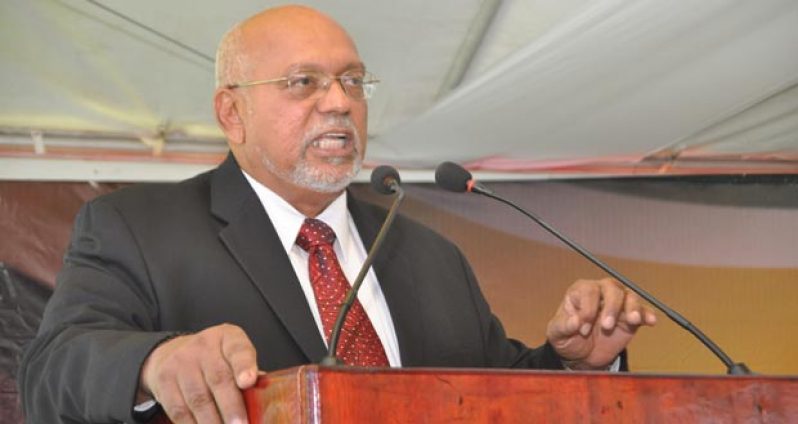PRESIDENT Donald Ramotar, last Friday in his address to the nation, underscored the need for focus to extend beyond Amaila, in seeking to develop infrastructure to respond to the impacts of the climate change phenomenon.
According to the Head of State, to date, a total of US$150M, US$70M invested in LCDS projects and US$80M for the Amaila Falls Hydropower Project (AFHP), has been paid over to Guyana by Norway. These payments, he noted, represent payments for climate services and continued low deforestation, as part of the country’s Low Carbon Development Strategy (LCDS) up to 2012.
Additionally, he stated that the Cunha Canal, which is one of Government’s initiatives, will be transformative in their efforts to deal with climate change.
However, Mr. Ramotar noted that there is still a lot to be done to improve the Conservancy and sea defence. “We need to find better ways to deal with floods on the coast, and floods and drought in the hinterland,” he said.
With the help of cheaper energy, he explained, forestry and agricultural sectors can expand greatly, but this needs to be managed to ensure that Guyana continues its high standards of environmental sustainability and stand strong on their role as a vanguard for the global community.
“Every Guyanese can soon have access to cheaper energy, but we need to keep it affordable and expand our clean-energy supply options in the years ahead. Even as we create 2,200 new low- carbon jobs, we need to look beyond that and create many more,” the Head of State said.
Presently, payments from Norway are also enabling the rehabilitation of the Cunha Canal. This 600 million Guyana dollar project according to President Ramotar, is about to start, and will be a major achievement in dealing with the impact that severe weather has on the Conservancy.
It was noted that in the past, the Government had been forced to protect Georgetown from floods by letting water flow from the Conservancy into the Mahaica River and sometimes causing it to burst its banks and damage local farms and communities.
However, in the near future, the Cunha Canal will be used to discharge water into the much larger Demerara River, which will be able to cope with far greater volumes of water than the river system to the east.
The Cunha Canal Rehabilitation Project is a part of Guyana’s Low Carbon Development Strategy (LCDS) adaptation initiatives. This project is an important intervention addressing the focus area of adapting to climate change. The works will improve the ability of the Government of Guyana to manage water resources in the East Demerara Water Conservancy.
The Project intends to improve relief drainage in the East Demerara Water Conservancy (EDWC) that is envisaged to reduce Guyana’s vulnerability to the catastrophic flooding of its low-lying coastal areas.
The proposed physical works for the canal will include the widening of the canal; the rehabilitation of the former outlet structure; re-routing the canal to re-establish its original alignment and construction of a bridge on the East Bank of Demerara public road, where the canal intersects the road. Rehabilitation of the canal will increase its discharge capacity and contribute to reducing the risk of the embankment overtopping and flooding of areas along the East Bank of Demerara. The World Bank estimates the total project cost at US$2.51 million.
(By Ravin Singh)




.png)









